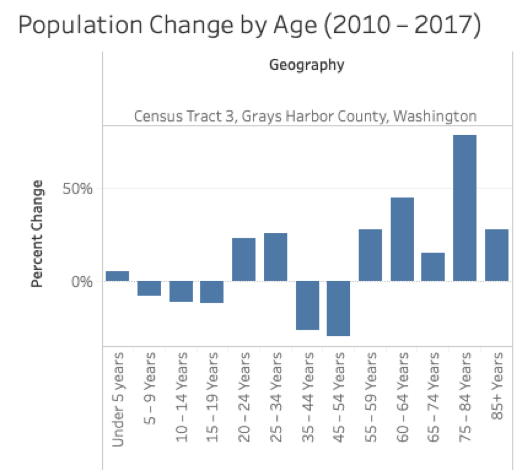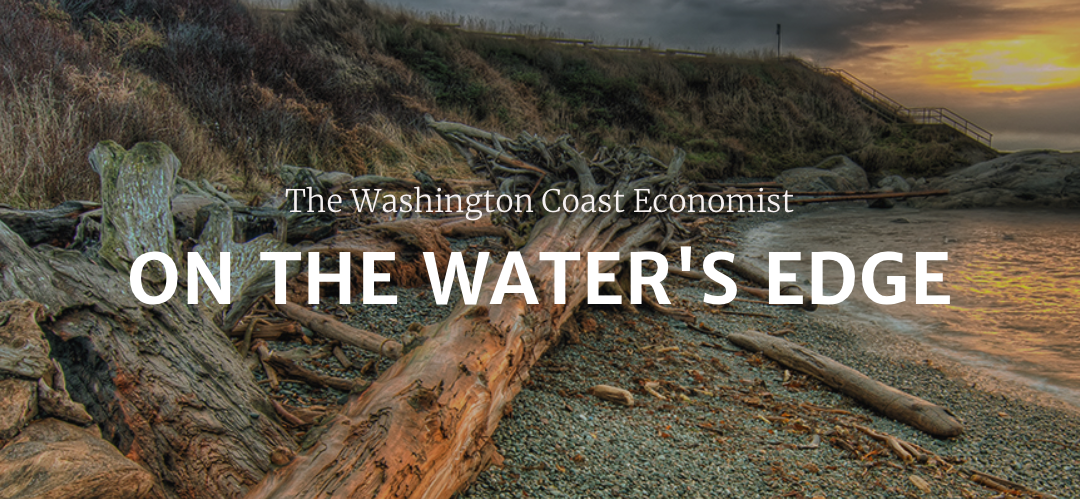Creating a Baseline Understanding of Washington Coastal Economies
In response to those concerns, Washington Sea Grant coastal economist, Kevin Decker, developed a website called The Washington Coast Economist. The site is intended to be an economic resource for coastal communities. It includes a blog section to discuss all things economics on the coast, a resources section to help identify resources that can assist with economic development, an economic studies section that serves as a repository of research and information on coastal economies, and an Economic Dashboard.
Interactive Data through an Economic Dashboard
An Example: Population Change
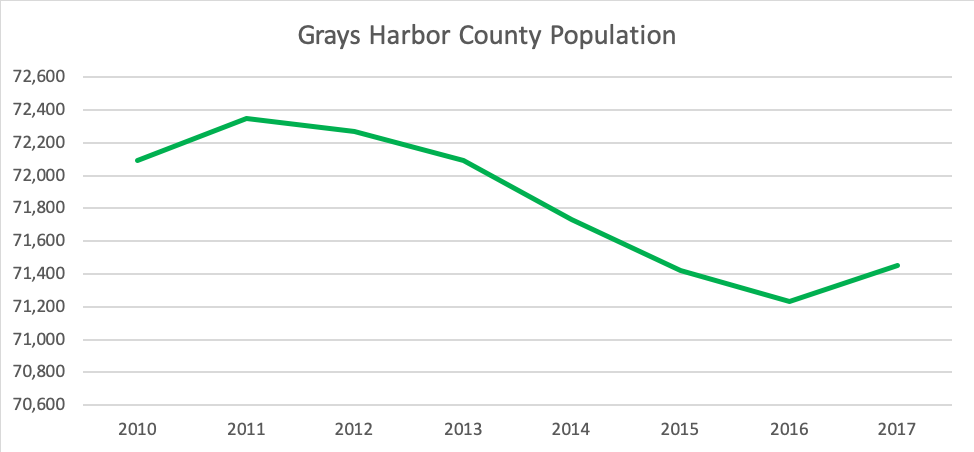
This basic population trend chart fails to capture some of the nuances that are taking place in the region. The map shows that population change from 2010 to 2017 has not been consistent across the county. The population centers of Aberdeen and Hoquiam, as well as the Quinault Reservation and Montesano, have experienced population declines. The eastern part of the county, closest to the I-5 corridor saw the most significant population increase and other coastal regions saw modest gains. Now that we know where population increases and declines are occurring, it’s essential to also look at additional population characteristics.
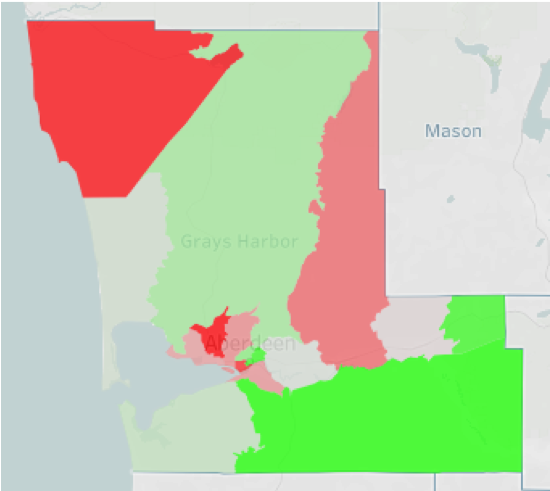
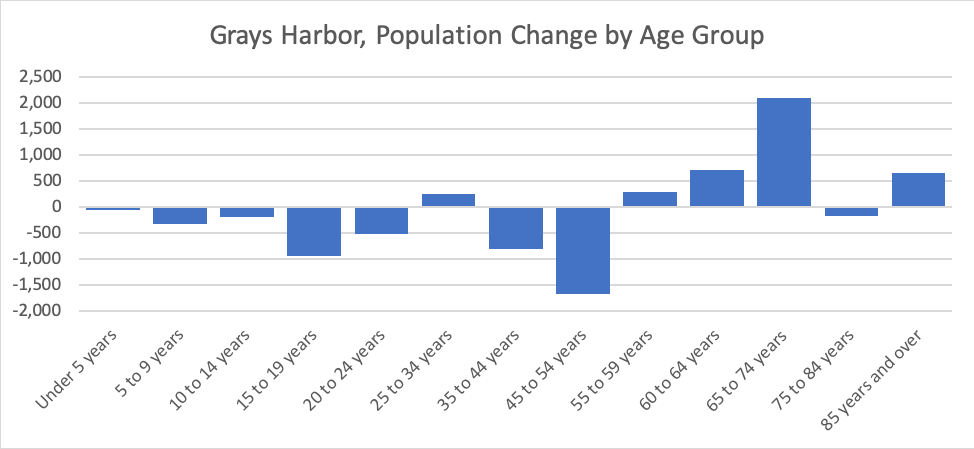
Tract Level Data Analysis
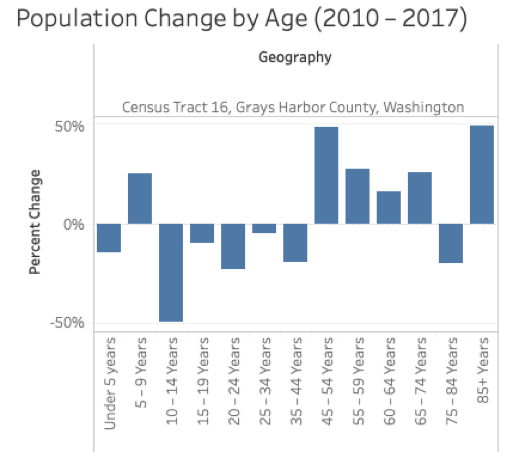
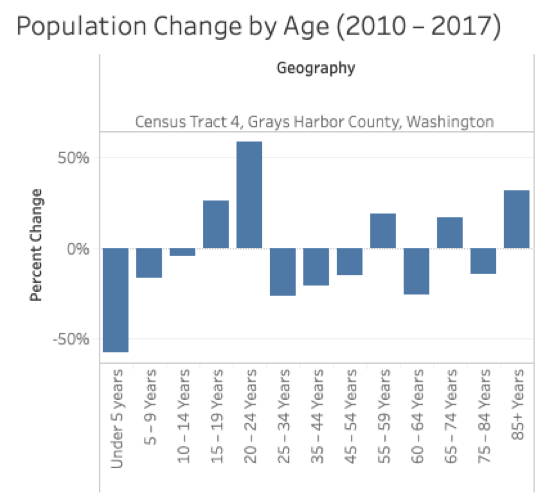
Tract 4 includes Montesano and reaches north and east towards the county line. This region is actually experiencing an increase in the age groups between 15 and 24, decreases in very young children and middle-aged adults, and mixed changes for retirees. The region seems to be attracting young millennials but is losing older millennials with young families.
